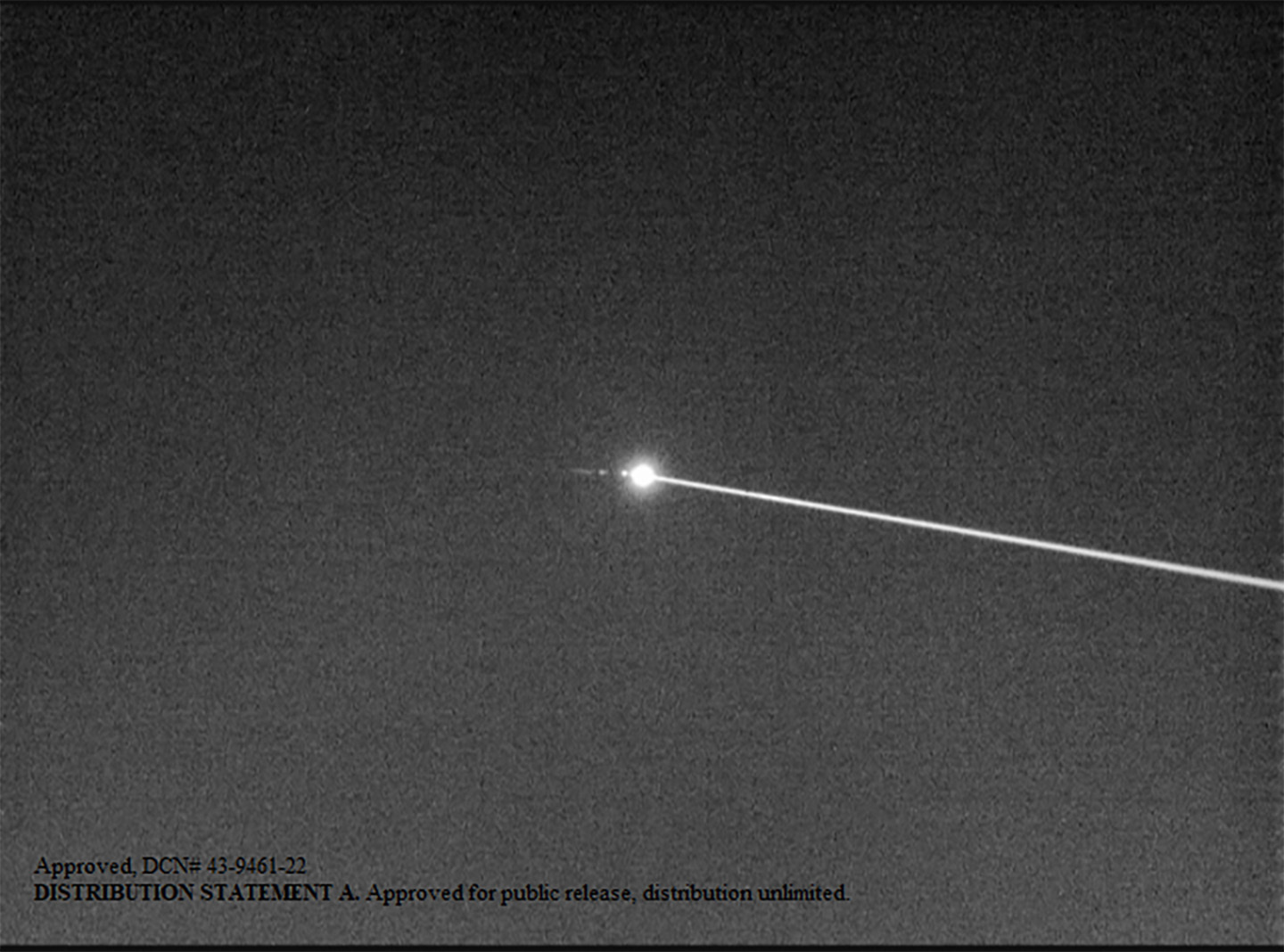

In the sky above the desert, the Navy’s laser destroyed a drone pretending to be a missile. This demonstration is part of the Office of Naval Research’s test of a counter-missile laser weapon in New Mexico’s White Sands Missile Range in February. Trialing the new weapon against a target drone imitating a cruise missile brings a future of laser defense one step closer to reality—at a time where ship-bound missiles are being actively used.
While the test took place in February, the Office of Naval Research announced the results April 13. Earlier that day, the Russian Navy’s Black Sea Flagship Moskva, a missile cruiser, caught fire. Russia’s Ministry of Defense claimed the fire set off an internal ammunition detonation while the Ukrainian Ministry of Defense said the ship had been hit by Neptune anti-ship missiles. On April 14, while being towed back to port, the Moskva sank. A senior US defense official told multiple outlets on April 15 that they confirmed two missiles from Neptune did in fact hit Moskva.
Laser weapons bring with them the promise of protecting ships from increasingly advanced and capable anti-ship missiles. Missile cruisers like the Moskva can be powerful weapons, launching attacks on ships, submarines, and defenders on the shore alike. But in order to deliver that promise, a ship needs to be able to stay afloat and defend against any attacks that come its way.
This laser weapon, the “Layered Laser Defense” (LLD), was built for the Navy by Lockheed Martin as a demonstration device. As envisioned, it will stop drones, small boats and subsonic cruise missiles. Neptune anti-ship cruise missiles, like the ones that Ukraine’s military claims hit the Moskva, are subsonic, though not all anti-ship cruise missiles are.
[Related: The UK’s solution for enemy drones? Lasers.]
To identify targets, the LLD also includes a telescope that can track flying objects, aid in identifying incoming vehicles, and examine how damaged an enemy vehicle got from laser fire.
“Innovative laser systems like the LLD have the potential to redefine the future of naval combat operations,” Chief of Naval Research Lorin Selby said in a release. Selby said the system could “address diverse threats, and provide precision engagements with a deep magazine to complement existing defensive systems and enhance sustained lethality in high-intensity conflict.”

Drones, missiles, and small boats all pose threats to ships that take advantage of an asymmetry of attack, which refers to using an assemblage of cheaper technologies to strategically take on a bigger, more expensive weapon, like a ship. Because ships are such big targets, navies invest in defenses to stop attacks, but that only scales to a point. It is easier for someone trying to sink a ship to have more missiles, or more small boats, or more drones, or a combination of all of the above, than it is for a ship to have enough weapons on hand to stop every incoming attack.
[Related: General Atomics and Boeing will build a giant laser for the US military]
That’s where the “deep magazine” of the LLD comes in. Instead of relying on a finite supply of anti-air missiles, or even a stockpile of bullets like a Phalanx close-in weapon system, the LLD just pulls its firepower from the electricity generated by the ship’s engines. That also, incidentally, means adding an LLD to a ship doesn’t come with the risk of adding another pile of explosives which could be set off by a fire on deck.
Laser weapons are also potentially much cheaper to use than other protective weapons on a ship. A report from the Congressional Research Service noted that “[d]epending on its beam power, [a Solid State Laser] can be fired for an estimated marginal cost of $1 to less than $10 per shot (much of which simply is the cost of the fuel needed to generate the electricity used in the shot).”
The 20mm rounds fired by the Phalanx cost $27 per bullet, though it’s not a direct comparison, as many bullets are fired for each intercept. The C-RAM, which is the Army version of a Phalanx and used on land, fires 300 rounds per target destroyed, making the cost per destruction about $8,100 on the low end.
That low cost, potentially as cheap as a dollar per use, has been part of the selling pitch of modern laser weapons for nearly a decade. When the USS Ponce mounted the Laser Weapon System in 2013, it too came with a “$1 per shot” claim. Depending on price, that can be cheaper even than some of the bullets used on ship-board machine guns. Unlike bullets, which do their damage all at once, a laser needs to stay focused on a target long enough to disable it through burning. The more powerful the laser, the less time on target needed, which is one reason laser weapons are paired with sophisticated tracking systems, maximizing burning time through a drone’s wing, a small boat’s engine casing, or even the guidance fins of a flying missile.
“It’s a challenging problem, but Navy leadership at all levels see potential for laser weapons to really make a difference,” said Frank Peterkin, ONR’s directed energy portfolio manager.